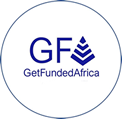The Elevator Pitch, the Founder, and the Investor

The length of the elevator ride is all the time available.
Many years ago, a documentary on the rise of the musical group, ABBA, sort of introduced me to the elevator pitch.
A journalist craved audience with the popular band and trailed them during their tour in Europe. But they were always on the move; it was difficult pinning them down for an interview. Several unsuccessful attempts later, he stood dejected by an elevator (in the hotel the group lodged) ready to leave and perhaps try again the next day. When the doors dinged open and he made to enter, ABBA occupied the space in front of him.
Equal parts delighted and shocked, the journalist stepped in with them. As the elevator slid close, he could be seen frantically unearthing a book and pen and dictaphone to seize the moment.
Do Founders Need an Elevator Pitch?
Everyone needs an elevator pitch in one form or the other. The job seeker needs it during an interview. The employee uses it to convince the top brass. It is also effective in other fields such as filmmaking, dating and publishing.
But those are hardly the focus here.
In the African start-up ecosystem, there seems to be more emphasis on the pitch deck for start-up founders, isn’t there? How to make it compelling. Elements worth including. Why it is important to the business. How to format it and everything else concerning it.
The pitch deck can also take at least 20 minutes to present to a potential investor. Unlike the snap elevator pitch. Because sometimes, the investor can only give the founder the time it takes to exit one location and enter a waiting car or attend a meeting.
An elevator pitch is a short story founders tell of an idea, product or company. We are A and we help B do C. It’s an overview of their companies and business strategies in a crisp and clearly articulated manner that can be understood in a short time.
The role of the elevator pitch is not to introduce all aspects of the business concept but to entice, stir interest in the investor. So it should intrigue, grab attention and leave the investor hankering for more information.
Elements of an Elevator Pitch
The elevator pitch usually answers about five questions: Who are you? What do you do? How do you do it? For whom do you do it? And how can people contact you?
In the branding world, these questions reduce to three: Who you are? What do you do? And why should anyone care?
For founders, it would be why should the investor care about what they do.
Taking a cue from Shark Tank, here are some elements to include in an elevator pitch:
- A quick introduction of the founder and company.
- A succinct description of the problem the company solves.
- Why the solution is unique and its competitive advantage/superiority to others.
- A glimpse into the earnings potential of the product/service and
- A persuasive call to action.
The best elevator pitches are short, direct, interesting, engaging, and pique the investor’s interest. They also set the stage for further action. And that’s the goal of every founder after delivering their elevator pitch—the next meeting.
Related: 18 Pitching Essentials: How to Pitch an Idea to Investors
About GetFundedAfrica
GetFundedAfrica is a cloud-based technology platform specializing in developing software that helps businesses to fundraise, grow, and tell their stories. Whether you want to raise funds ranging from $100k to $50m, scale your business or share your entrepreneurial journey, sign up for free at www.getfundedafrica.com.




